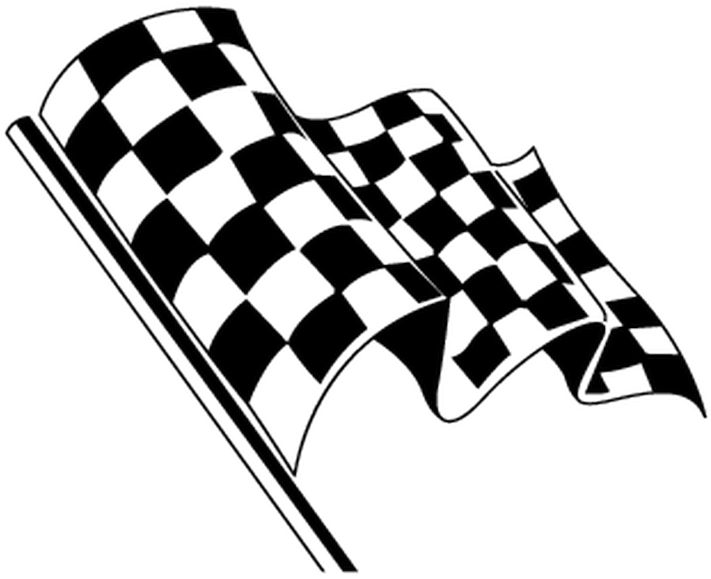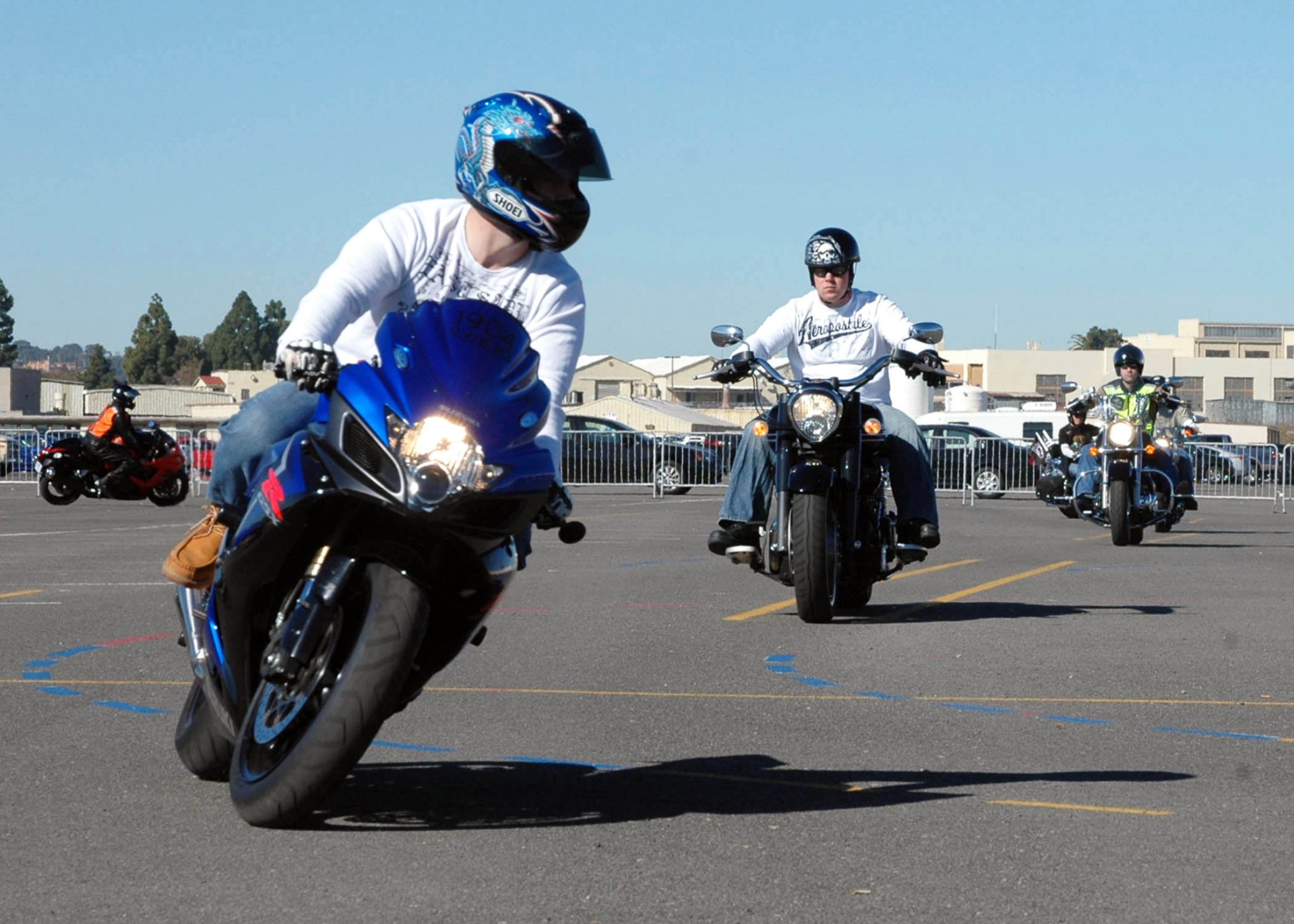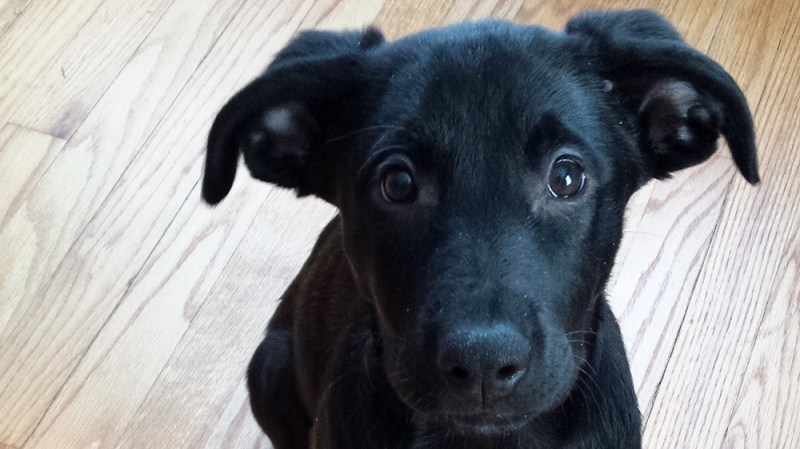Our blockbuster FTC disclosure awaits here. The following article was last updated on Nov 22, 2024 ...
Start Your Riding Season Safely (P1)
Spring is here and for those of us burdened with unrideable winters it's time to get back in the saddle. The excitement of dusting off your ride and heading out to enjoy the fresh air makes it easy to forget that you may have gotten a little rusty along the way. Don't get caught up in trying to get your riding chops back, calculating that perfect apex while forgetting about the most important aspect to your riding ... safety!
“Spring is here and it’s time to get back in the saddle. The best way to get yourself prepared for this year's riding season is to practice. ATGATT!”
The best way to get yourself in the safety mindset is to take a class. We here at The Riding Obsession advocate every beginner taking an MSF or similar course before heading out on the road. Editor in chief Robin Dean is currently in the process of training to become a motorcycle safety instructor.
Even if you're a seasoned vet, it's worth your time and effort to take an advanced riding course at the season's start. It'll align your focus and better your riding to get you home in one piece. You can even take a track day prep course or Total Control class. This will get you thinking about your riding and shake those cobwebs loose before you're really out there with the cagers.
If there isn't a class offered in your area or it just won't fit your schedule there's a lot of great literature available that'll point you in the right direction. Lee Park's "Total Control" and David L. Hough's "Proficient Motorcycling" are two great places to start. Head down to your closest big box sports supply, get some cones, head out to the most isolated area in their parking lot (or some other open land) and set up a little test course to get yourself going.
Now that you're read and trained up for the season, it's time to think about gear. I like to say "WWTSD? ATGATT!" (What Would The Stig Do? All The Gear, All The Time). Minimally you should have a DOT rated helmet from a reputable manufacturer, motorcycle Jacket (that faux leather from JC Penny won't help you in a crash), motorcycle gloves (made from real leather), and sturdy (preferably moto-specific) boots. I would also recommend motorcycle protective pants. There are a number of brands making reinforced denim that won't leave you looking like a Storm Trooper. At the very least, get that DOT approved helmet!
Once geared up, you're ready to ride but is your ride ready? Hopefully you've winterized/de-winterized your baby correctly and she's more or less ready to fire. That said, you should give your bike a good inspection before heading out. The middle of traffic that's long forgotten about motorcycles since the snow first fell is no place to discover that your fork seals are leaking onto your brake disc or that your tire pressure is woefully low. Dig out your Haynes or Clymer manual or ask your "MOM" (Motorcycle Owner's Manual) and do those pre-ride checks: lights, fuel, oil, forks, brakes, tires, etc. With all of the checks and prep done, it's time to hit the street.
Three Riding Groups: General, Rural and Urban
General riding safety is the common sense stuff. The problem with common sense is that it's so common we often forget it. One thing I see, especially from cars, is bad lane changes. It's a basic process that is often overlooked. Signal first, check your mirror, turn your head to check your blind spot. Do this every time and you will avoid many a close call. This announces your intention to act and ensures that you're aware of your surroundings before you do. Being aware of your surroundings is another easy practice. Even if you're not changing lanes or turning, check your mirrors and blind spots. If you see an absent minded driver coming, you can take extra steps to make yourself more visible or get out of the way. Make sure you're aware of the weather and possible changes in the direction you're heading. Also keep an eye out for construction or changes to the road surface since you were last on your motorcycle.
Remember that the big bright thing in the sky is always moving West. If there's any chance you'll be riding at night, be prepared. If you're using a dark visor on your helmet make sure to bring a clear one along. That black leather might look cool but doesn't help weary truck drivers see you in a sea of head lights. Throw a hi-viz vest in your bag and make yourself visible. If you'll be riding at night regularly it might be worth investing in some extra lighting for your ride. Most bikes that weren't built for touring have mediocre headlights and would benefit from a boost of lumens up front. Remember that the critters like to come out at night as well and keep an eye to the edge of the road for those eyes that will light up in your head light.
The last general rule I will mention is being ready for weather. This doesn't just mean having rain gear with you. Getting too hot doesn't only cause heat stroke and dehydration, it will also affect your brain and slow your reaction time. Getting too cold can also affect your ability to think clearly and cold limbs cannot quickly react.
Rural routes are usual favorites among the motorcycle set. They offer light traffic, beautiful scenery, and curves to keep you entertained. These rustic settings offer up their own set of hazards. Keep in mind that your favorite route on the edge of town might now be a pothole nightmare after the freeze and thaw of winter. Make sure you're scanning the road for voids, leaves, gravel or sand. All of these can catch you off guard and send you to the pavement or worse. Make a note of the wildlife in your region which may very well be out.
As the seasons change so do the roads and their hazards. The patterns and habits of the local fauna shift. Clipping a squirrel might mean some grimey cleaning when you get home. Hitting a deer would be much worse. The road conditions will also change. The left over grit from the winter gives way to the tar snakes of summer which give way to the slippery leaves of fall. Early spring and late fall both mean the possibility for snow or ice.
If you're like me and use your motorcycle as primary transport then you need to think about the dangers of commuting in an urban environment. Sure you're less likely to have a deer run out in front of you but what about a pedestrian or a bicycle? Take extra care at intersections and crosswalks. Remember that most people aren't expecting a motorcycle and even if they look right at you it doesn't mean they see you. If you're following a car through an intersection keep to the left of the lane so that on-coming traffic making a left can see you and doesn't think they see a gap in traffic. Make yourself visible. When you're riding down a row of parked cars there are some tricks to keep you safe. Look through the windshields and you can often see if there's a pedestrian coming through. You can also use this trick to spot if there's someone in the driver's seat. If so, expect that car to move. You can also look for exhaust, tail lights or the front wheels being turned out. Whether it's a new part of town or your neighborhood, if you miss your turn or exit, just let it go and wait for the next turn. A sudden swerve or lane change could be a much bigger mistake than being a few minutes late.
These are just a few things to think about to make sure you're safe out on the road. That's why it's important to get yourself educated either via a class or good reading and definitely with some practice. Motorcycle safety will make sure that you have a fun and long riding future ahead of you.

How Do You Hone Your Skills Preseason?
Snowmobiling? Luge? Archery? C'mon ... tell us your secret! What do you do in preparation for spring motorcycling? Your input is invited. Leave a comment and/or write an article!




Thoughts gone wild? Write an article!